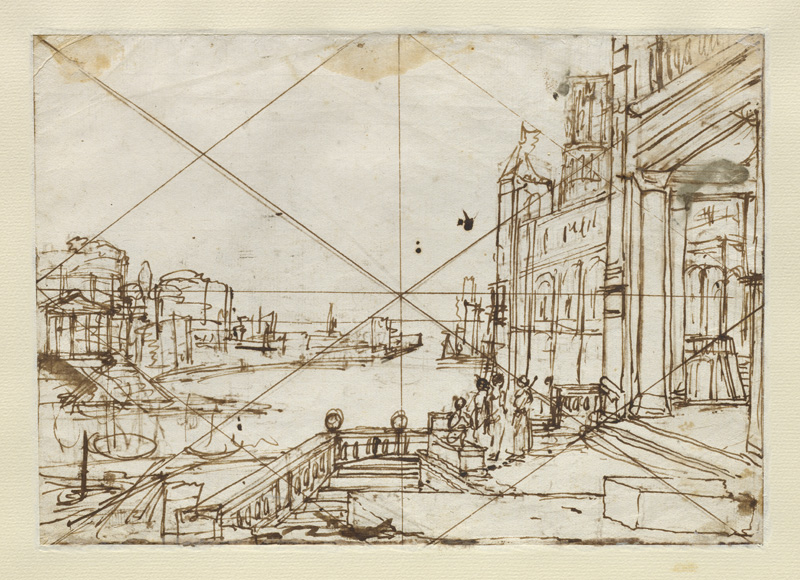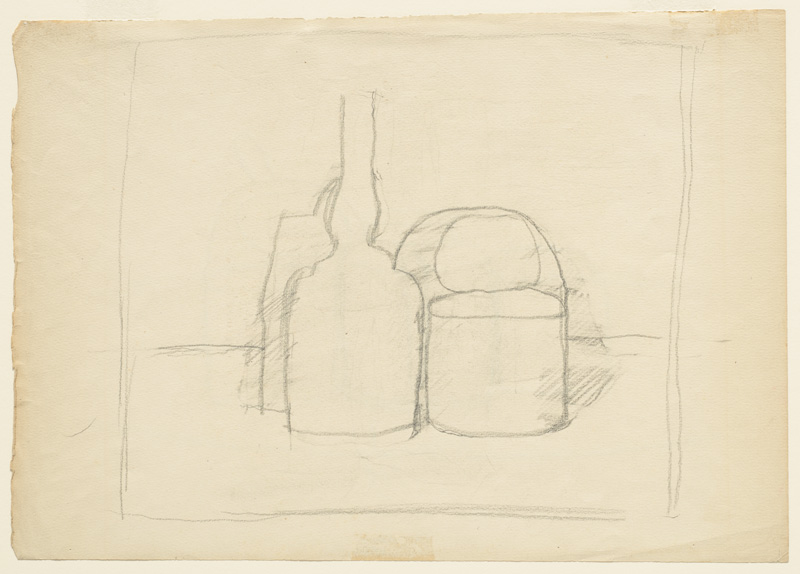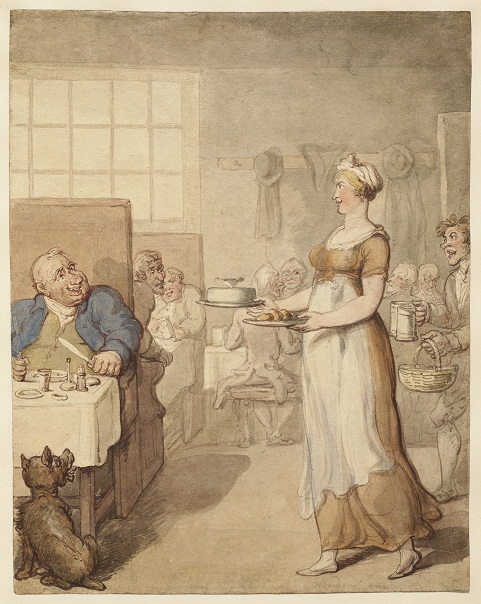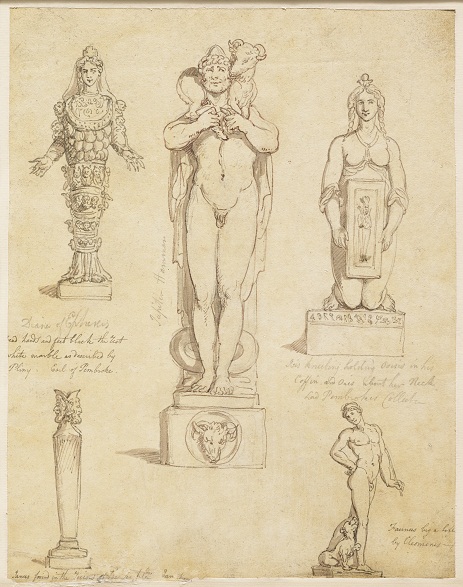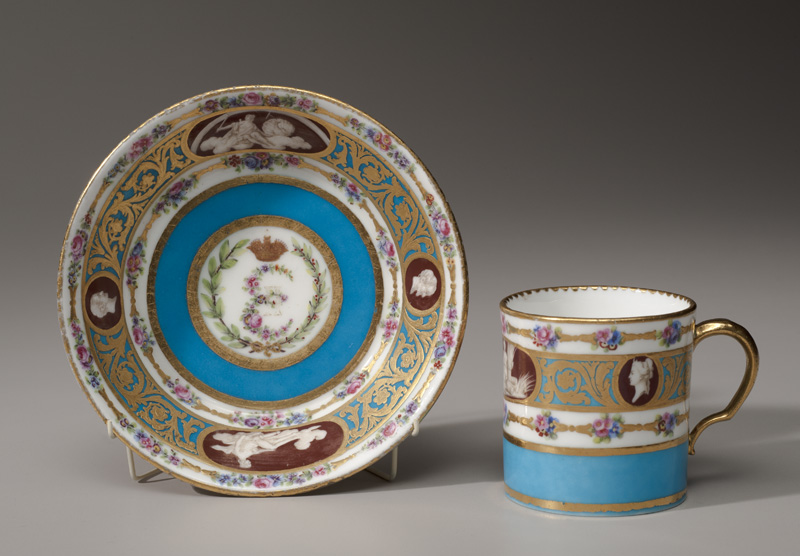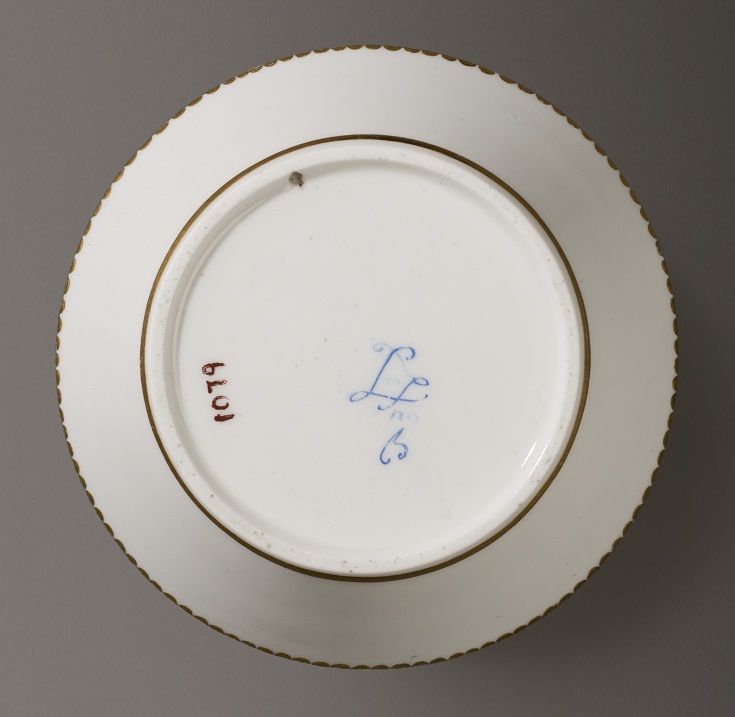
december 22, 2012–APRIL 21, 2013
SELECTED WORKS
Claude Lorrain, A Study for a Seaport (recto), c. 1640–41
Claude Lorrain was celebrated for his paintings of imaginary seaports. This drawing is a study for The Embarkation of St. Ursula, one of his most ambitious paintings, now in the National Gallery, London. With quick and assured pen strokes, the artist drafted a provisional idea for the general composition. The diagonal lines drawn across this design form a grid that probably helped Claude to construct a balanced composition and transfer the design to canvas.
After Claude finished drawing on one side of this sheet, he probably placed it up against a window. This technique allowed him to see his drawing in reverse and trace the image onto the other side of the paper. Reversing the drawing in this way may have helped Claude decide on a final composition. A few revisions to the original drawing are apparent, notably in the number and arrangement of figures.
Giorgio Morandi, Still Life with Bottle (recto), 1949
Giorgio Morandi, Still Life (verso), 1949
Inspired by the still lifes of Paul Cézanne, Giorgio Morandi repeatedly depicted ordinary household objects in deceptively simple paintings, drawings, and prints. Here, his delicate pencil lines record the contours of the bottles and the negative spaces between them, turning a simple still life into a vehicle for exploring subtle relationships and expressive arrangements of form.
This drawing provides a sense of the artist's experimentation with composition. The tall bottle on the other side of the paper is here replaced by a short container with a handle, and a square object has been added to the bottle's left. This side of the sheet has been considered the verso, or back, even though it is the side Morandi chose to sign.
Thomas Rowlandson, Mutton Chops in Maiden Lane (recto), c. 1798–1810. Gift of the Manton Art Foundation in memory of Sir Edwin and Lady Manton
Thomas Rowlandson, Studies of Classical and Egyptian Figures (verso), c. 1817–21. Gift of the Manton Art Foundation in memory of Sir Edwin and Lady Manton
Set in the convivial atmosphere of an all-male eating establishment, this drawing is a bawdy celebration of the pleasures of the flesh. A plump old man seems to be salivating like the eager dog at his feet at the sight of a buxom serving girl bearing a plate of food. A knife and fork lend him only a thin veneer of civility. Thomas Rowlandson was apparently not concerned with orienting the drawings on the two sides of this sheet in the same direction: when both sides are displayed, one side is inevitably upside down.
As a student at the Royal Academy in London, Rowlandson learned to model his artistic practice after that of the ancients. Here, he renders classical forms in his own distinctive drawing style. The fact that the studies were drawn on the back of a satirical watercolor from several years earlier may be explained by the artist's circumstances. The sketches were done while Rowlandson was staying at a friend's country house, where paper may have been in short supply.
Sèvres Porcelain Manufactory, Cup and Saucer, 1778
Sèvres Porcelain Manufactory, Saucer (verso), 1778
This cup and saucer come from an elaborate dinner service for sixty people that Catherine the Great, Empress of Russia, commissioned in 1776 from Sèvres, the royal porcelain manufactory in France. Every aspect of the design was worked out to her exacting specifications. The turquoise color—chosen to reflect her love of the semi-precious stone—was exceedingly difficult to achieve and resulted in many wasted pieces as glazers attempted to perfect it. The decorations include Catherine's monogram (E for Ekaterina), and profile medallions that imitate the type of classical relief carvings the empress passionately collected—reflecting what she herself called her "cameo fever."

